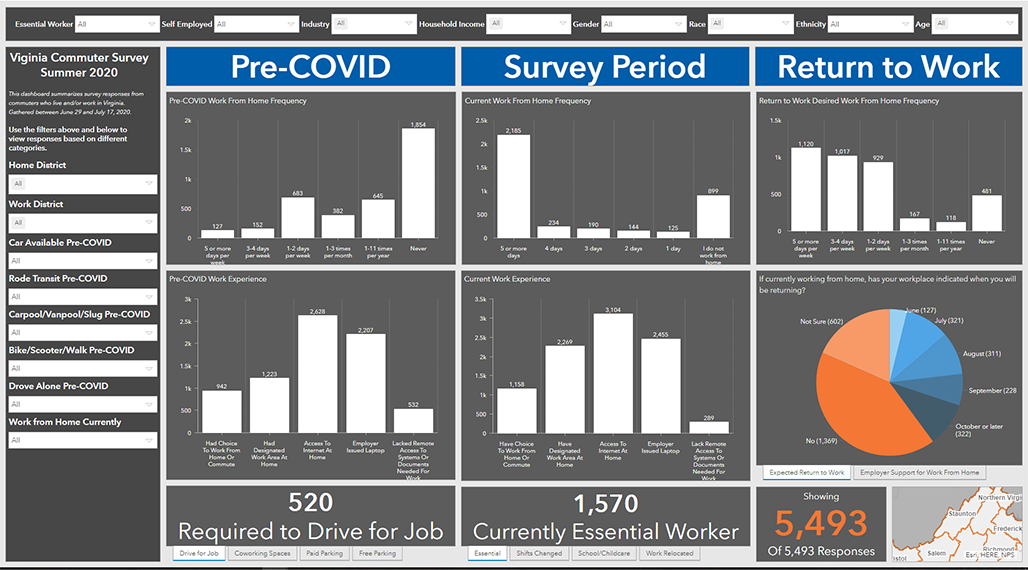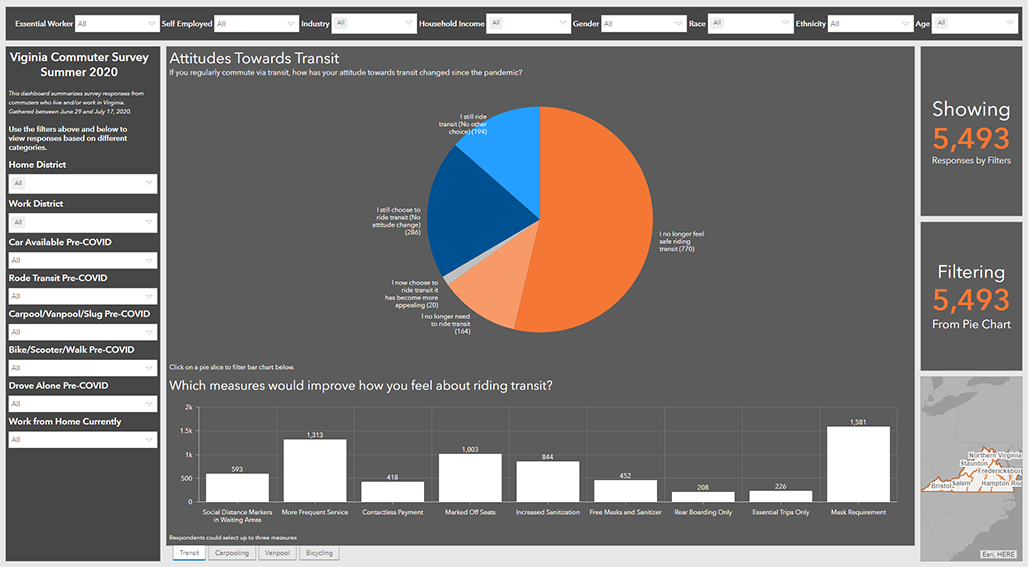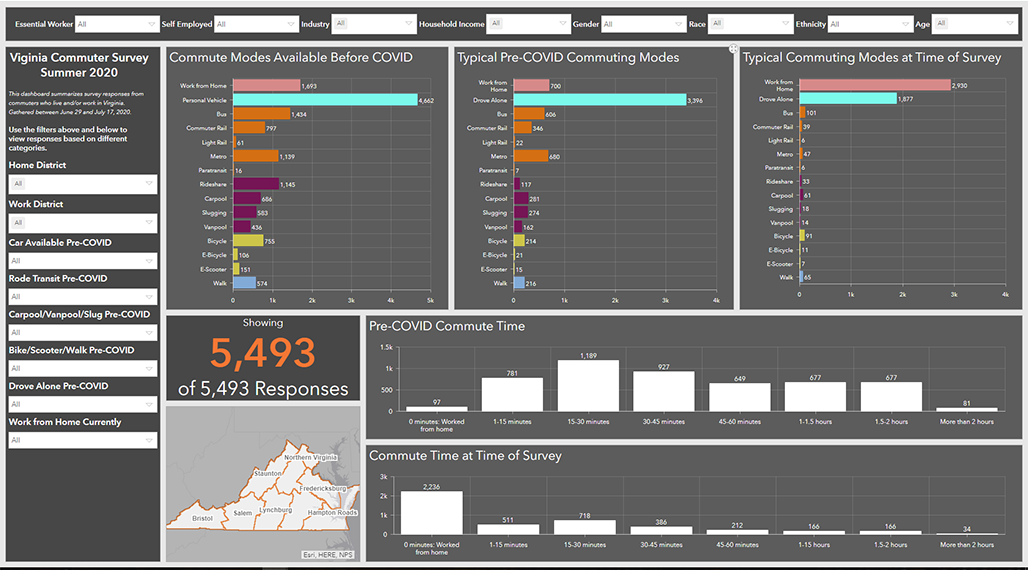Virginia Commuter Survey

Overview
The Virginia Department of Transportation in partnership with the Department of Rail and Public Transportation is collecting data associated with travel to and from work in response to COVID-19 in Virginia.
The COVID-19 pandemic has changed the way people are traveling, including, to and from work. The purpose of the recurring Virginia Commuter Surveys is to understand how commutes are changing and identify opportunities to improve commuting during and after this pandemic.
For the purposes of these surveys, commuter refers to "a person who travels regularly between home and work, or works from home." The targeted respondents for these surveys are commuters who live and/or work in Virginia.
FAQs
Who is the intended survey audience?
These surveys target people who work and/or live in Virginia who typically commute or work from home.
How did you publicize the survey to potential respondents?
These surveys were advertised on social media and through news releases from VDOT. Respondents from previous rounds of the survey who provided an email address also receive invitations to respond to subsequent surveys.
What is the purpose of these surveys?
These surveys aim to capture changes in commuting patterns and preferences associated with the COVID-19 pandemic.
What is the goal of these surveys?
The goal of these surveys is to adequately plan for short- and long-term changes in how people travel to work in Virginia.
What agencies are involved in this survey?
The Virginia Department of Transportation (VDOT) and the Department of Rail and Public Transportation (DRPT) have partnered in survey development and coordinate with commuter resource agencies, transit agencies, localities and other stakeholders to support survey responses.
Survey Phase 3 Results
The graphics and interactive dashboards contained in the panels below summarize the responses gathered from March 15 to April 16, 2021.
As the COVID-19 pandemic continues to affect commutes, people are thinking differently about getting to work in the future. Only 68% of survey respondents are working from home at least part time, a 5% drop from Fall 2020. However, those working from home are more likely to be doing so full time, as those primarily working from home rose from 45% to 50%. Attitudes are changing dramatically as 63% of people wish to continue working from home even after COVID, a rise of 13% from last year.

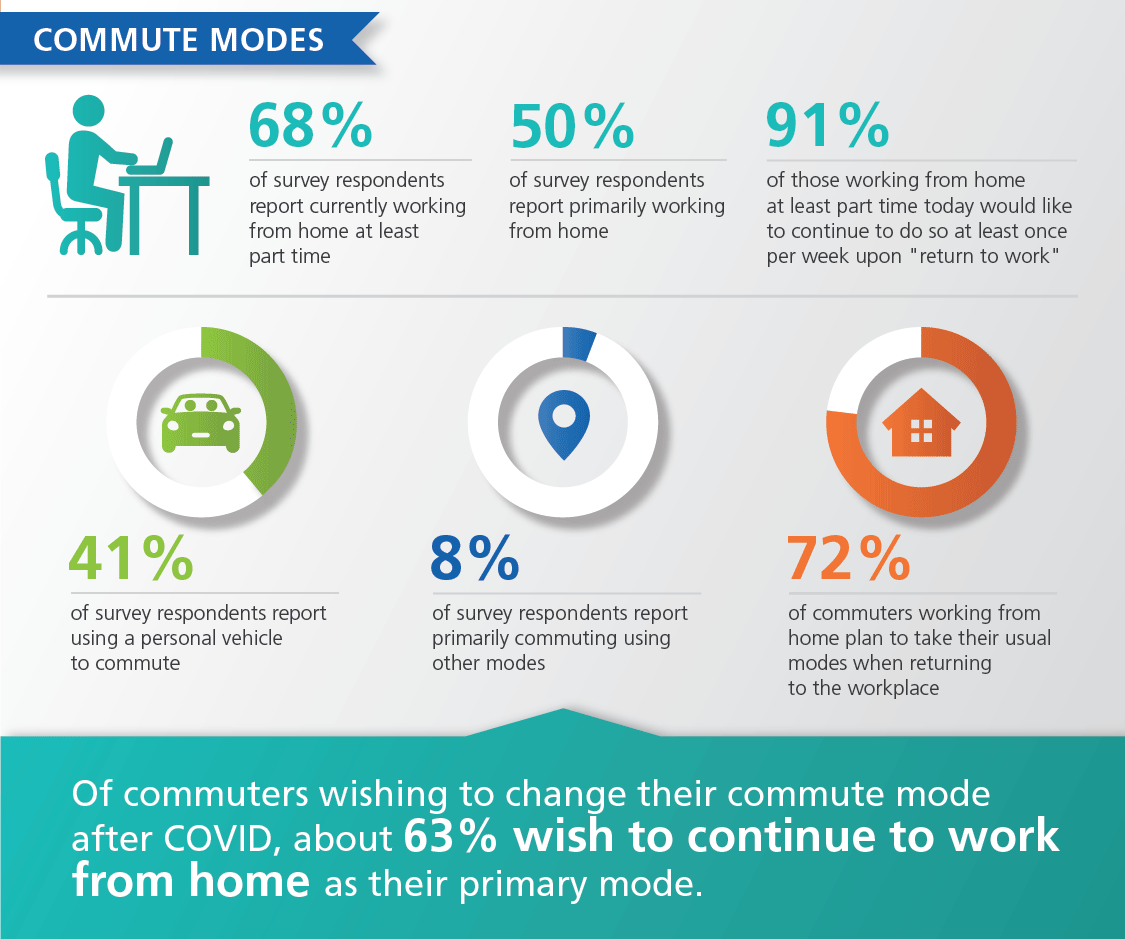
Nearly three times as many commuters are working from home at least once per week compared to before COVID-19. Of those working from home, 67% are doing so full time, down from 71% last fall and 76% last summer. Nearly 18% of respondents working from home have been informed that they will continue to work from home post-COVID, a significant increase from 8% in the previous survey. Overall, people who wish to work from home at least once a week dropped from 81% to 77%
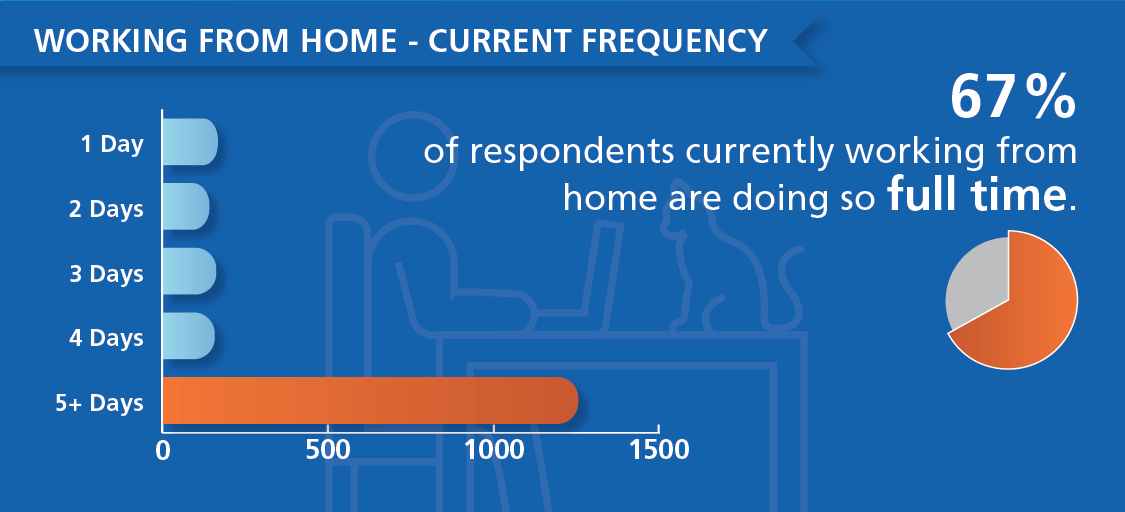
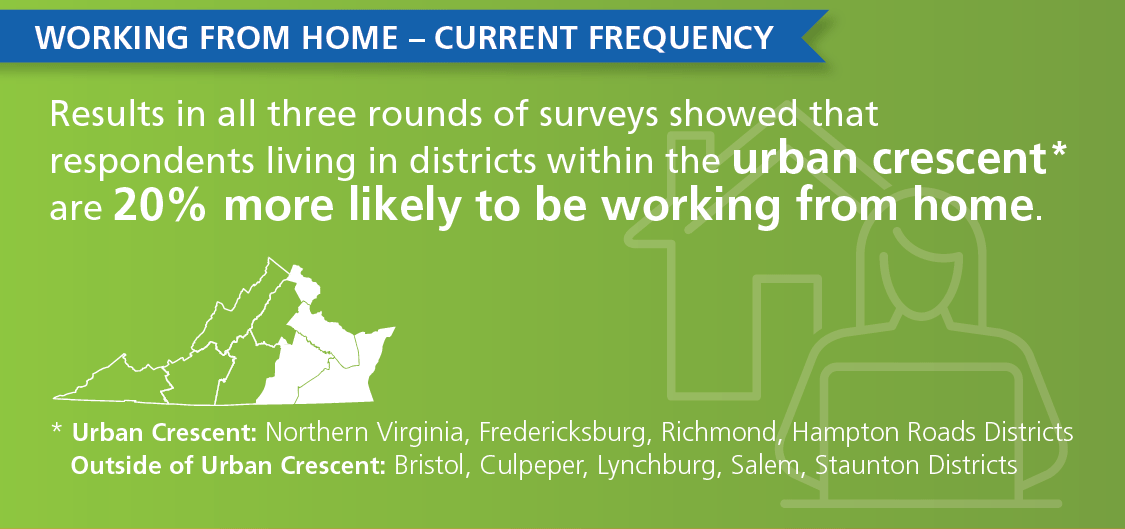
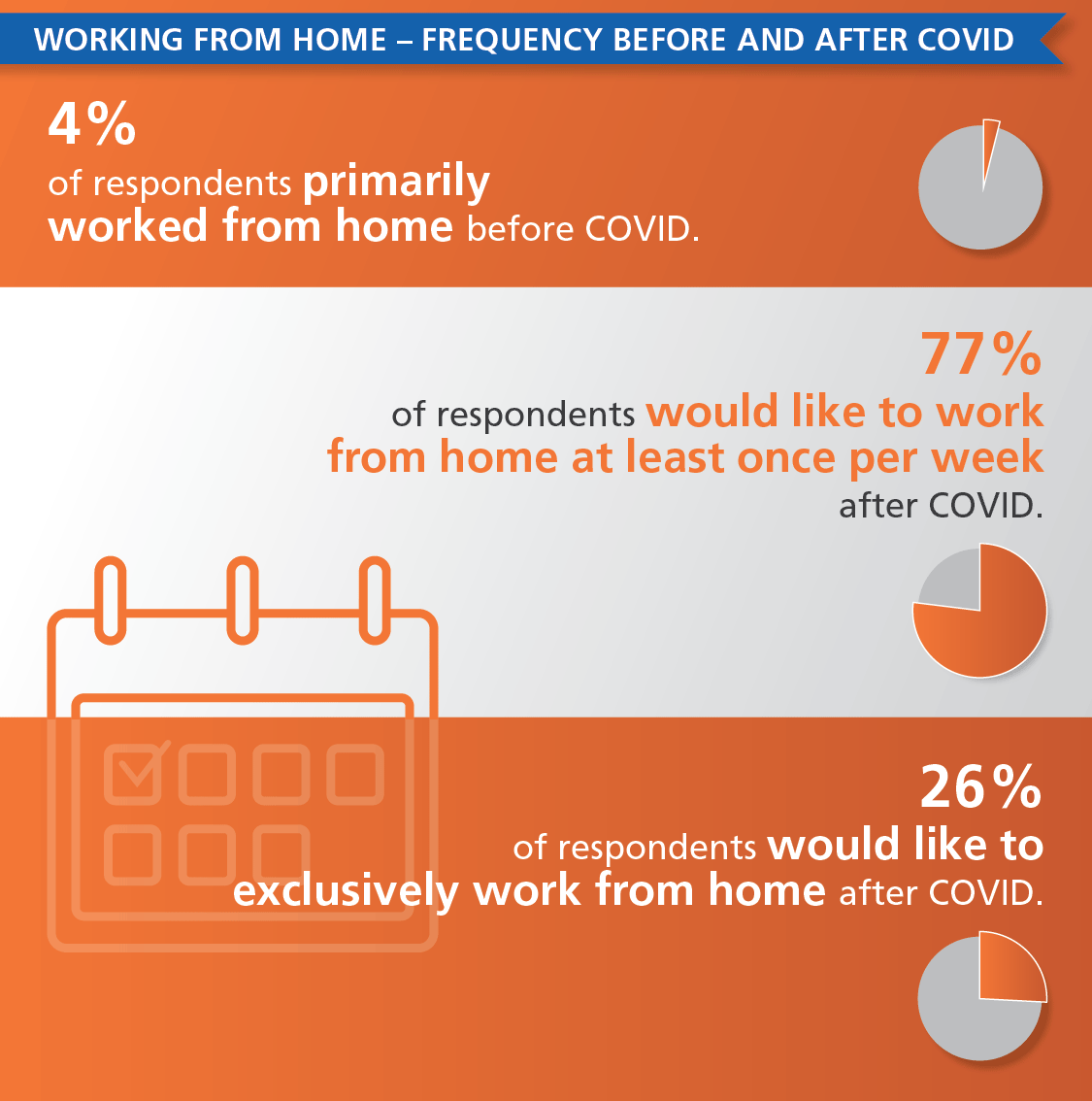
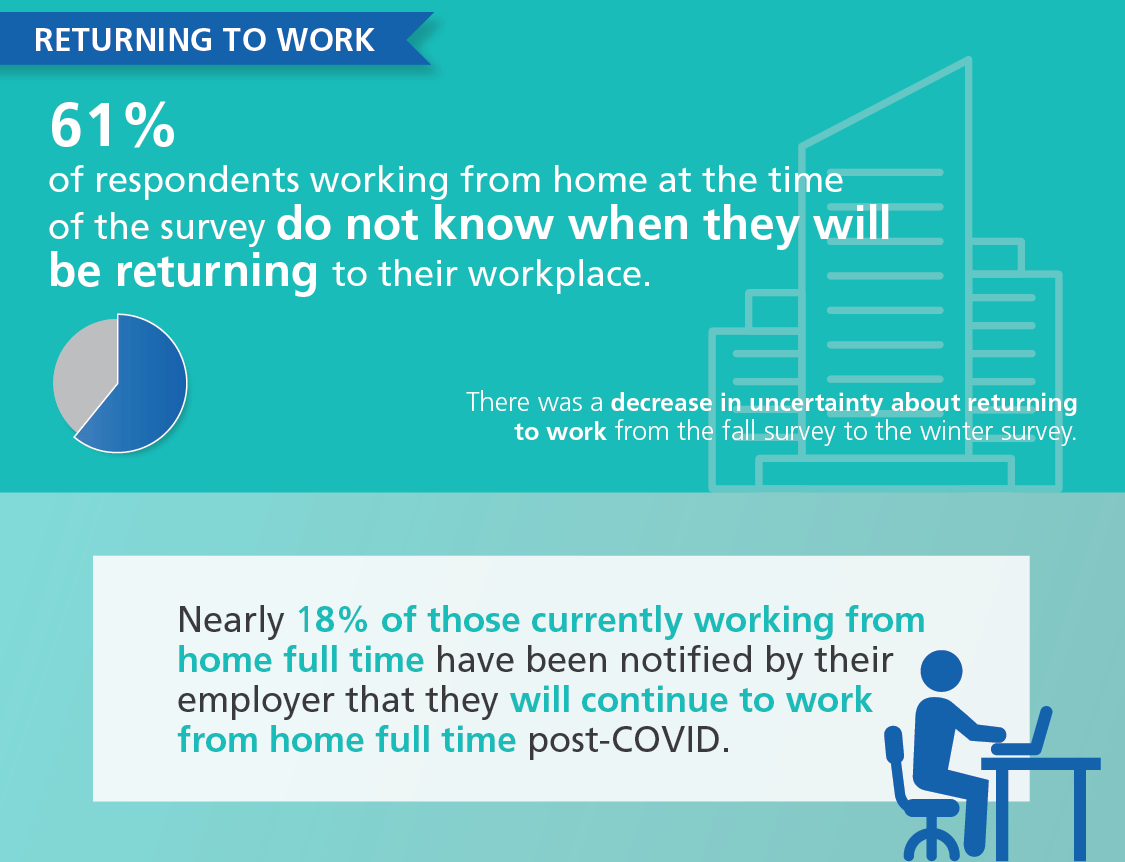
There are signs that the workforce has adapted to the childcare demands of the pandemic: only 14% of respondents working from home reported that daycare or school closure has impacted their work, down from 16% last fall. Women are less than 1% more likely to be impacted by daycare or school closures than men, a notable decrease from 13% in 2020.
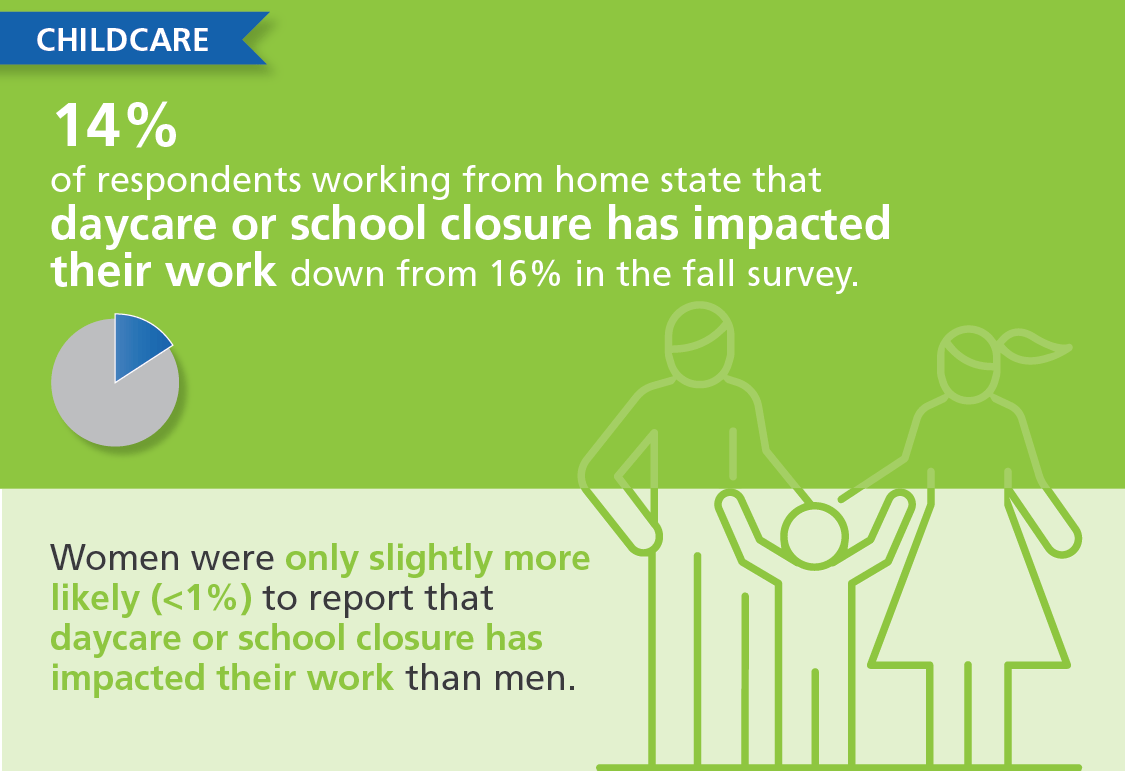
When asked about safety measures that would improve feelings about riding transit and carpooling, respondents seemed to have similar priorities to Fall 2020: with the addition of COVID vaccine availability, mask requirements and more frequent service are still the top picks. Similar to the previous survey, 30% of respondents who are commuting via bicycle have switched from a different mode. New bike lanes and shared-use paths are still the highest-priority safety measures which commuters reported would increase their comfort levels when traveling by bicycle.
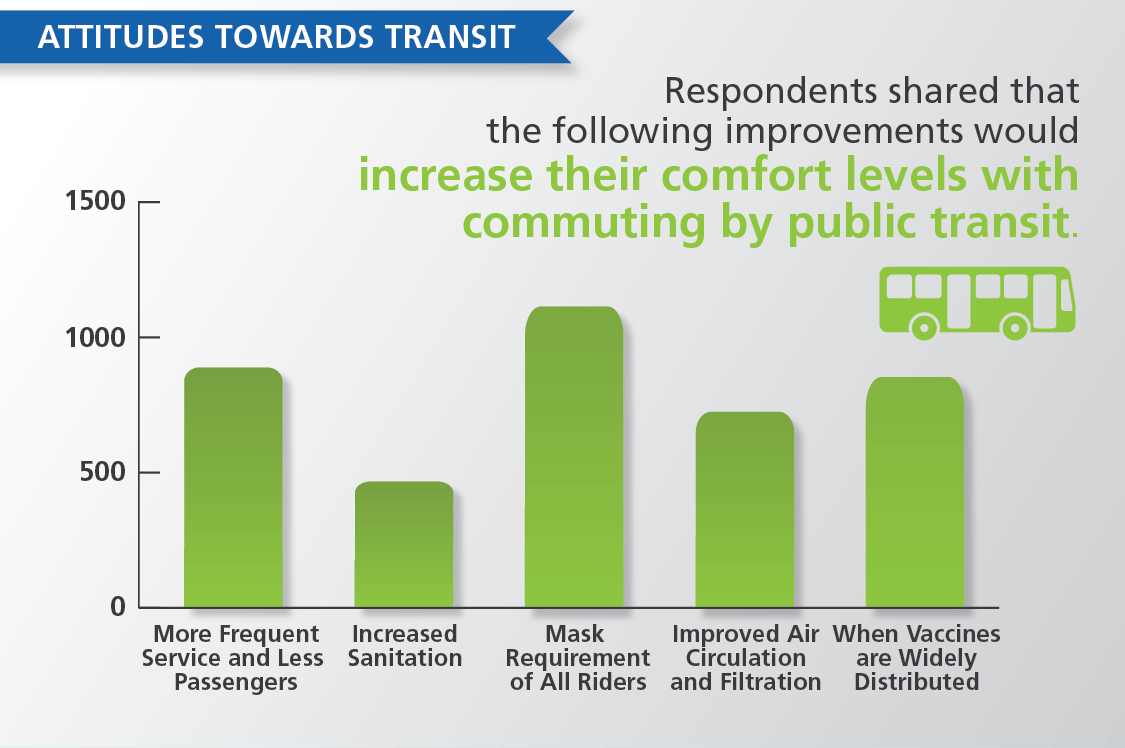
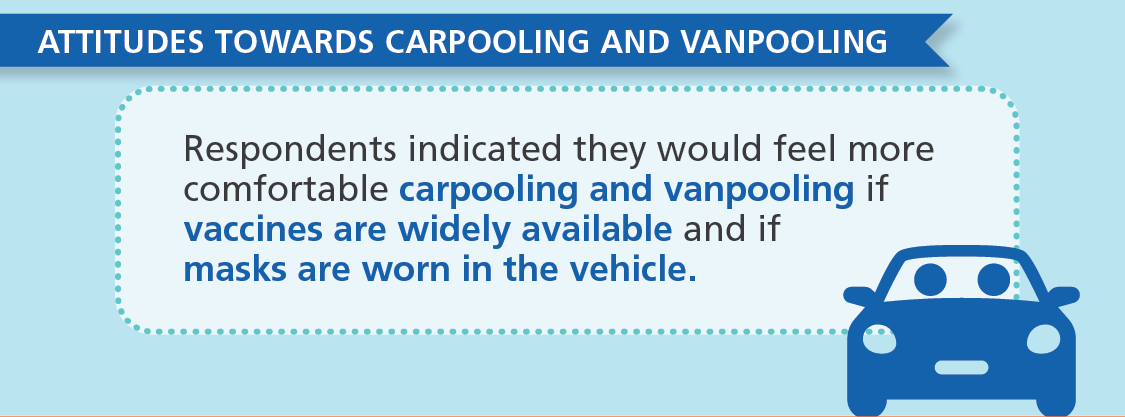
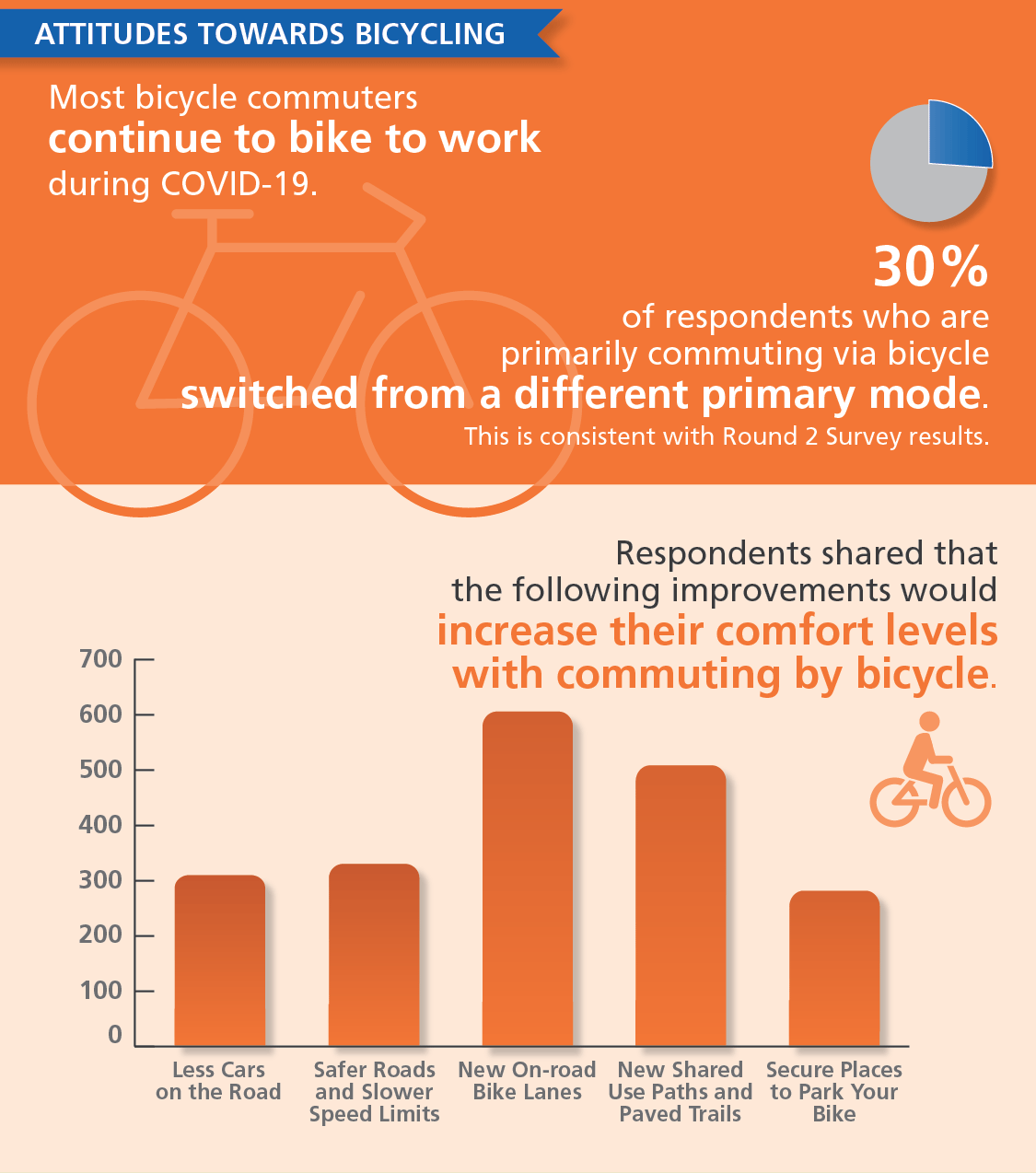
Survey Phase 2 Results
The graphics and interactive dashboards contained in the panels below summarize the responses gathered from October 5 to November 3, 2020.
The COVID-19 pandemic has changed not only how Virginians commute, but also if they are commuting at all. How are these commuters working instead? At the time they completed the survey, 73% of survey respondents report working from home at least part time, a marginal decrease from 76% this summer. Many commuters working from home plan to take their usual modes when returning to their workplaces, but 81% of respondents hope to continue to work from home at least part time, even when it is safe to return to the workplace.

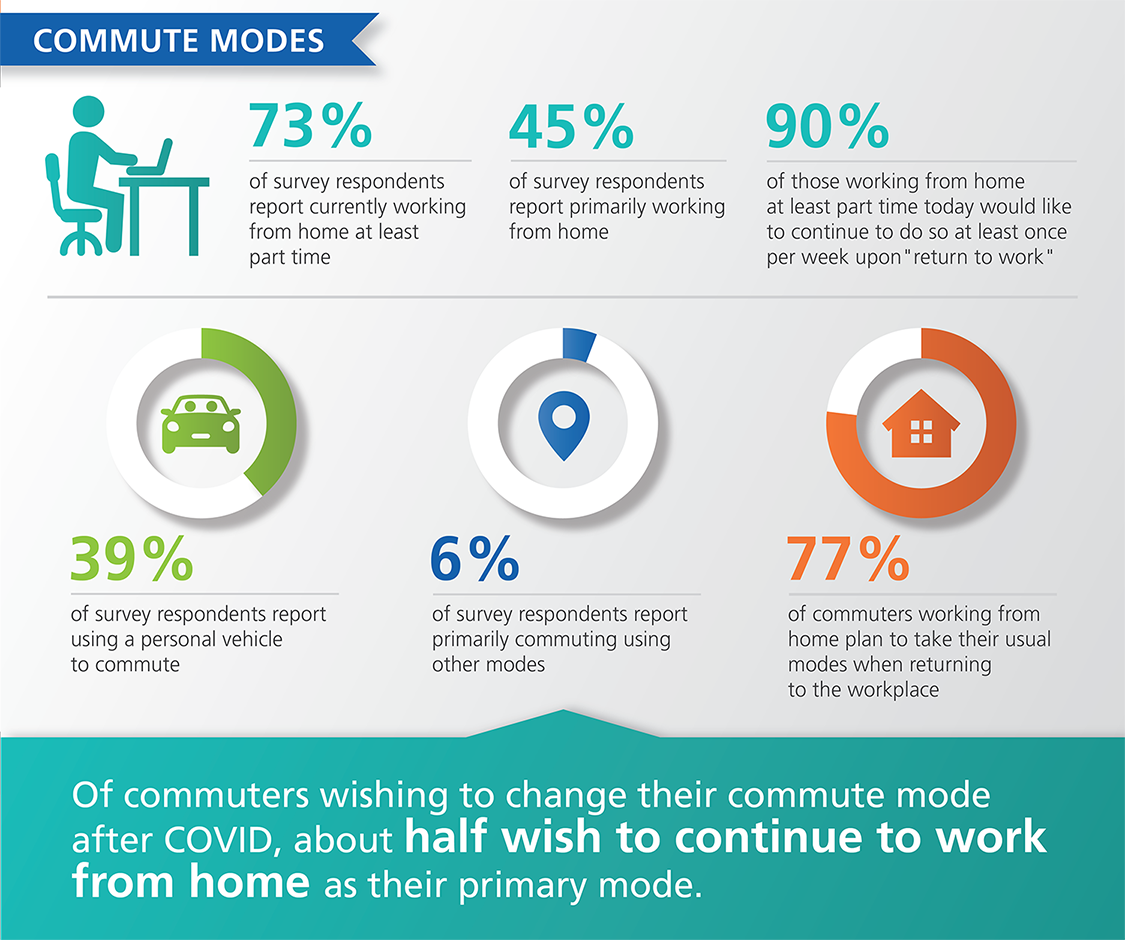
Nearly three times as many commuters are working home at least once per week compared to before COVID-19. Of those currently working from home, 71% are currently working from home full-time, down from 76% this summer but up from only 17% before COVID. This summer, 60% of respondents working from home did not know when they would be returning to their workplace, and fall respondents report even more uncertainty, with 67% not knowing when they would return. Consistent with summer survey respondents, more than 80% of fall survey respondents would like to work from home at least one day per week after the pandemic.
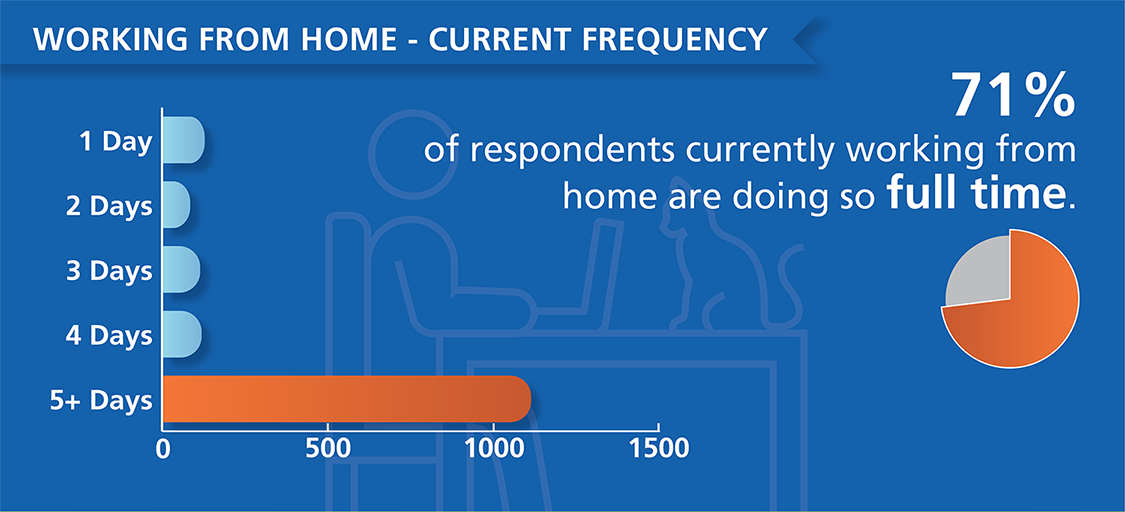
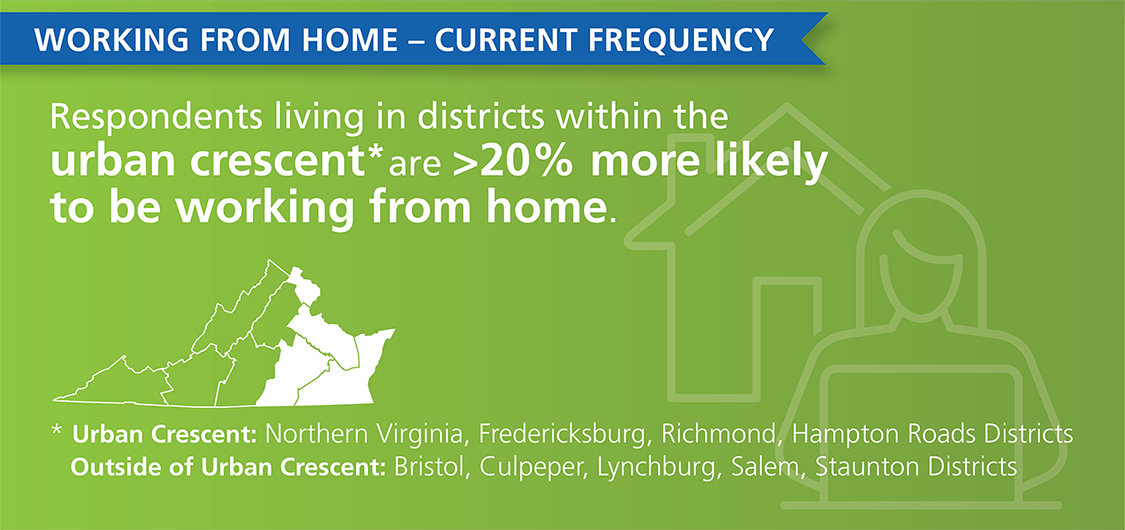
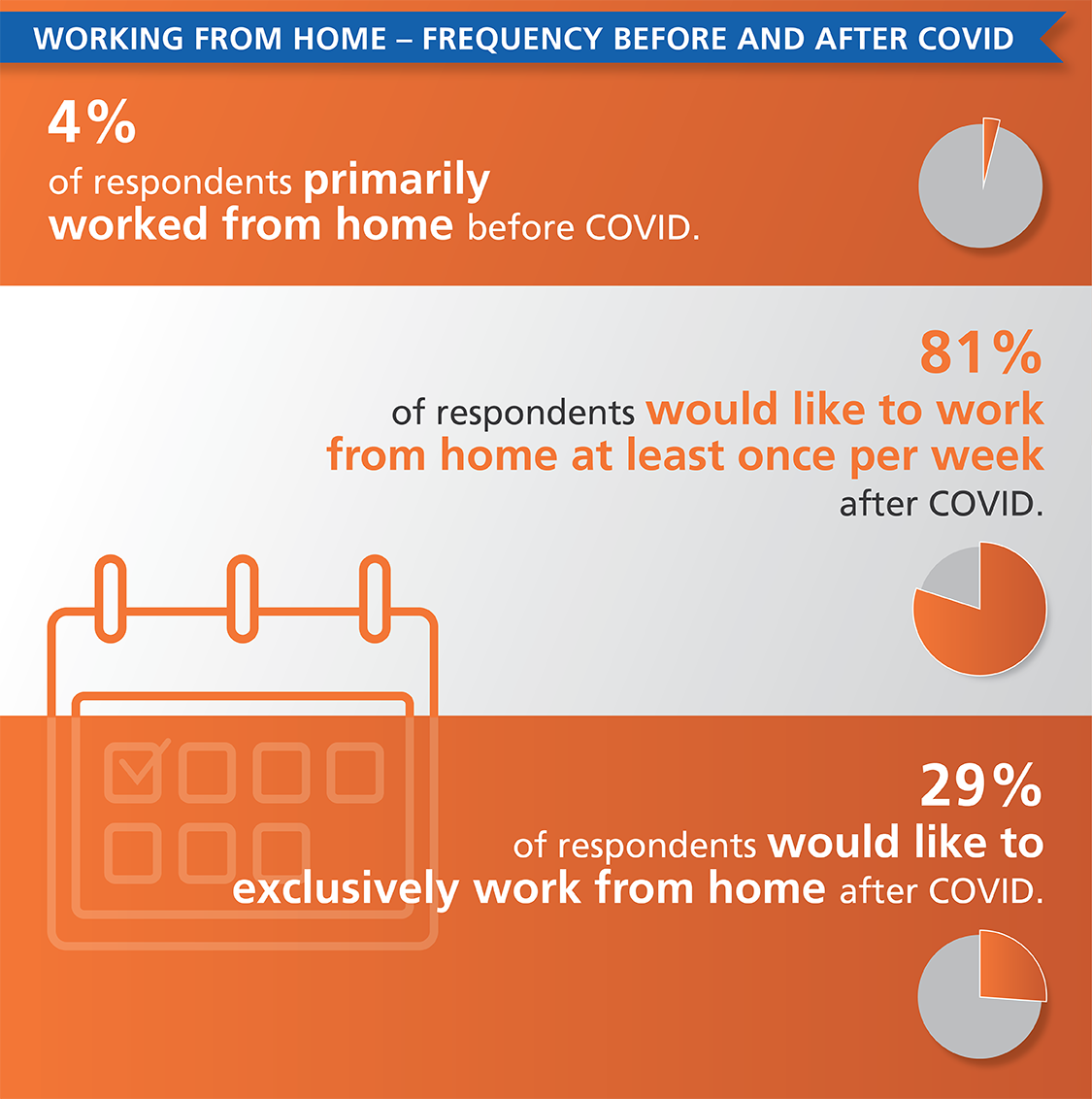
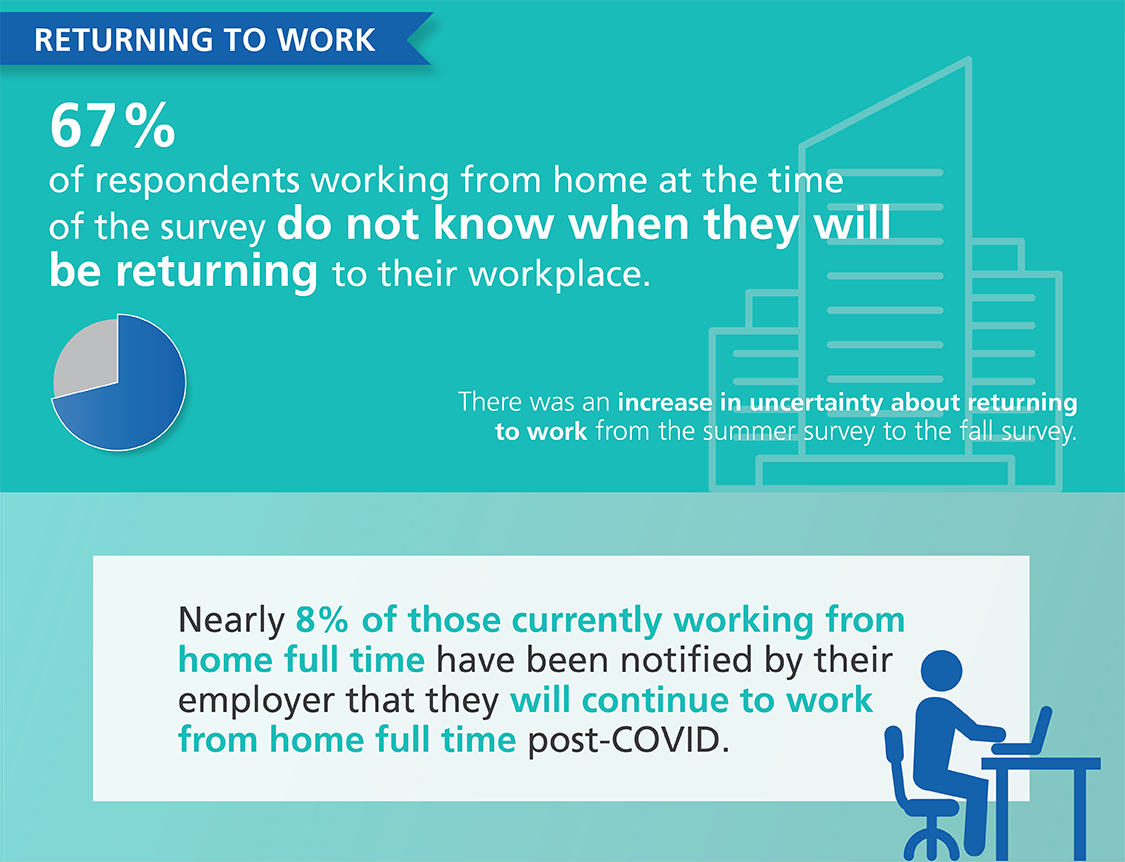
Respondents to our survey are not the only members of their household staying at home these days: 16% of respondents working from home stated that a daycare or school closure had impacted their work. Women were 13% more likely to report impacts on their work due to daycare or school closure than men.
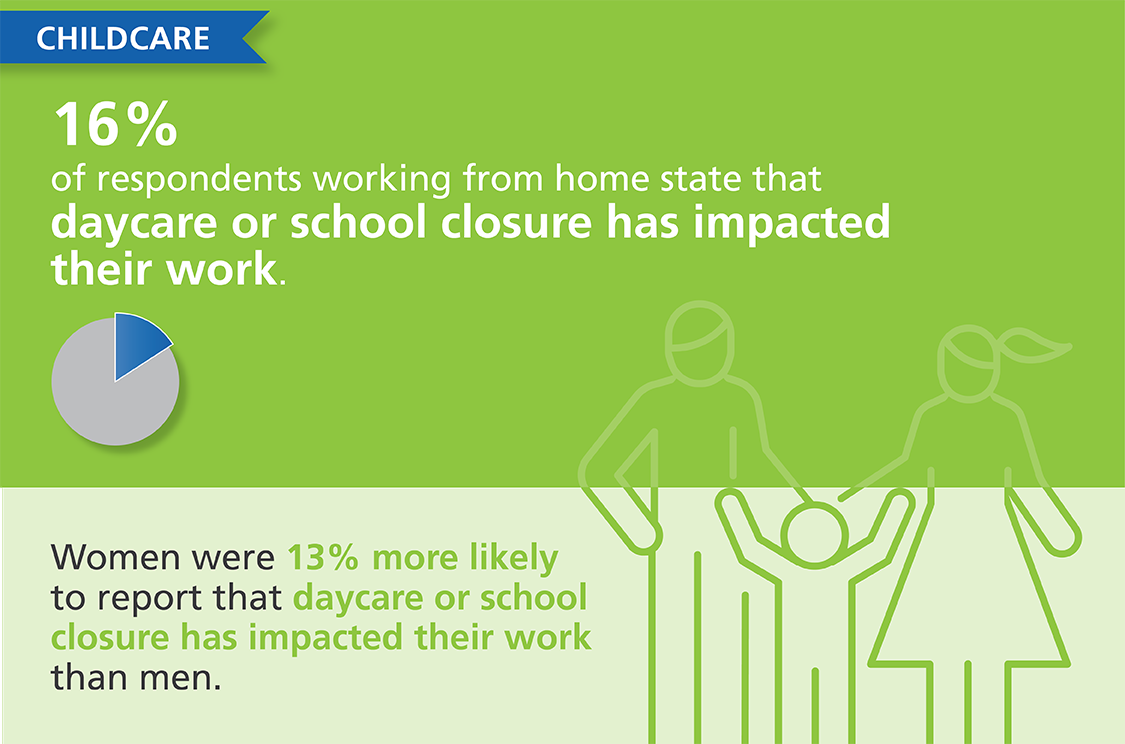
When asked about the top safety measures that would improve feelings about riding transit and carpooling, respondents prioritized wearing masks and efforts to encourage social distancing in the vehicle, including more frequent service and blocking off seats for increased space between passengers. Of the respondents, 30% who are currently commuting via bicycle previously used a different mode of transportation, indicating that commuters see bicycling as a good commuting alternative during COVID-19. New bike lanes and shared-use paths were the top safety measures respondents reported would improve feelings about bicycling.
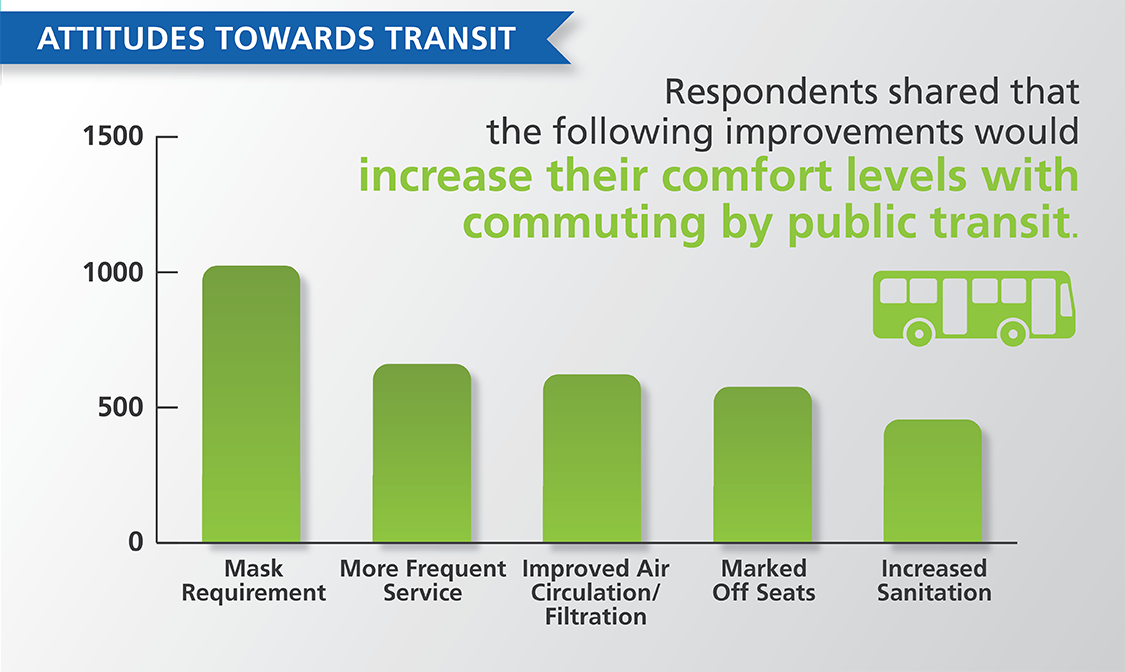
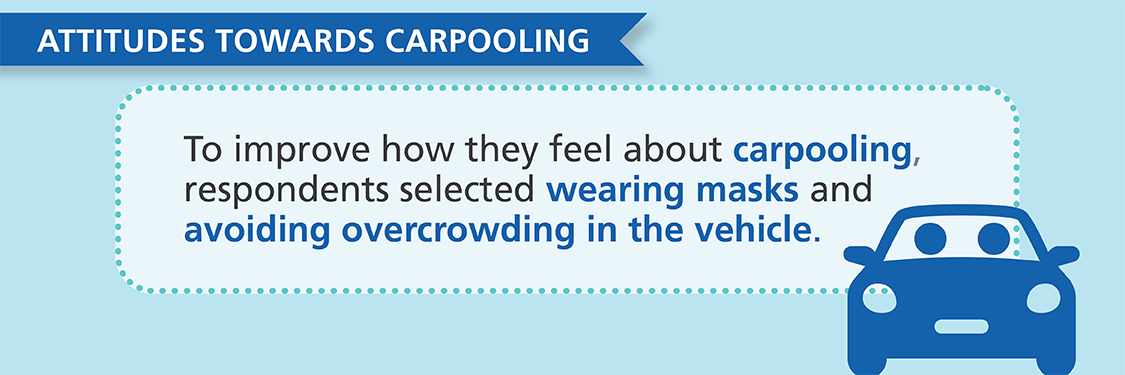
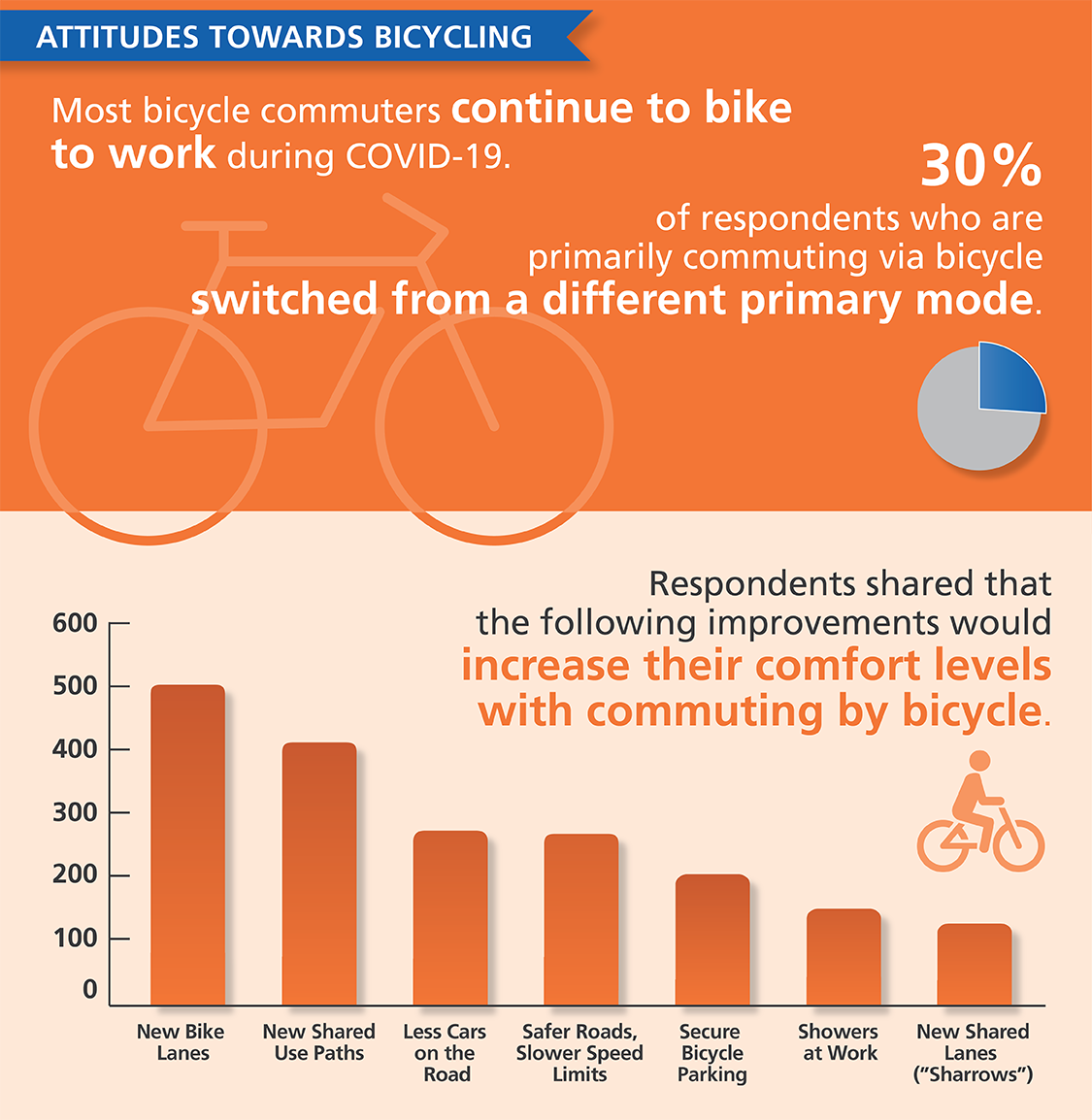
Survey Phase 1 Results
The graphics and interactive dashboards contained in the panels below summarize the responses gathered between June 29 and July 17, 2020.
Three times as many commuters are working home at least once per week compared to before COVID-19. Of those, 76% are currently working from home full-time, compared to only 13% before. 60% of those working from home do not know when they will be returning to their workplace, though 80% of respondents would like to work from home at least one day per week after the pandemic.
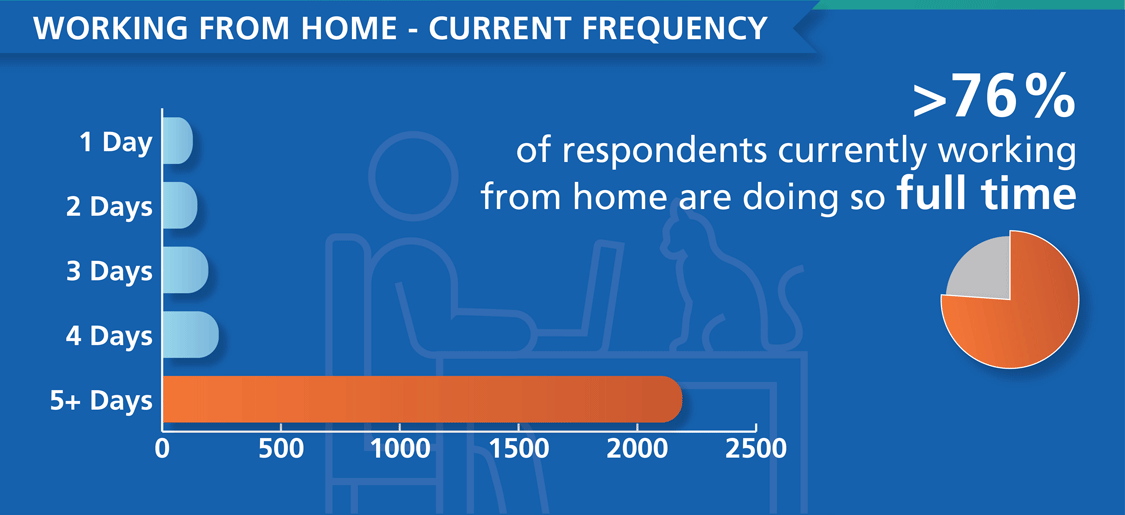
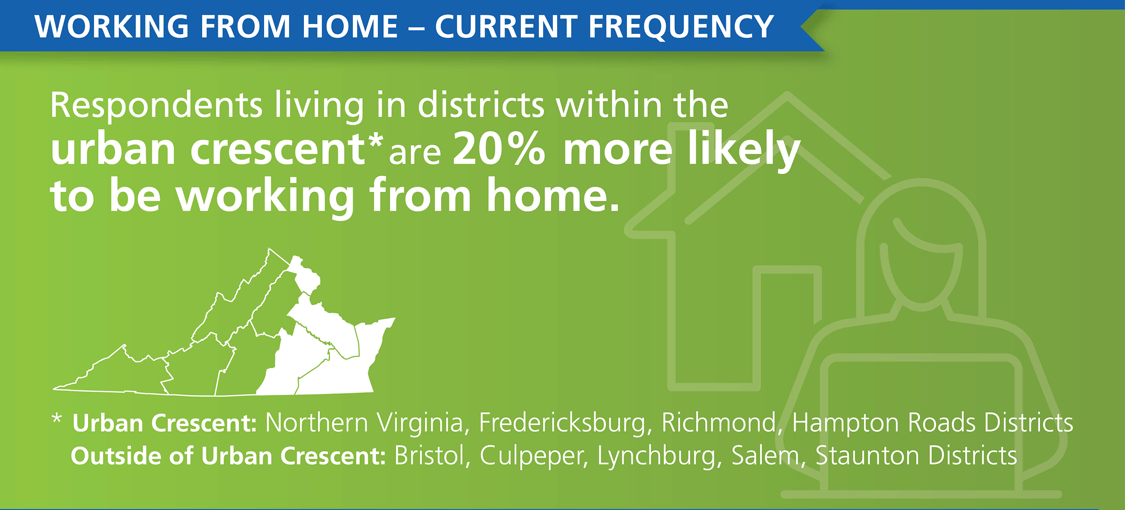
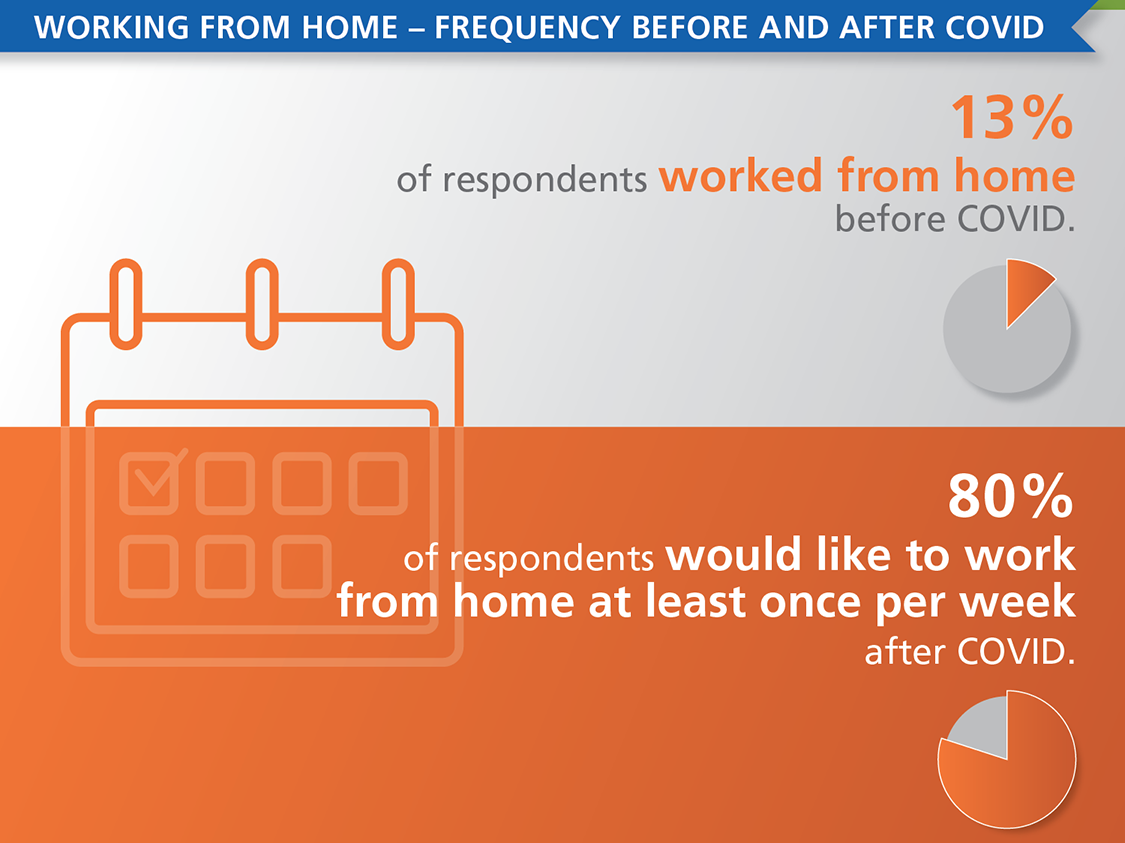
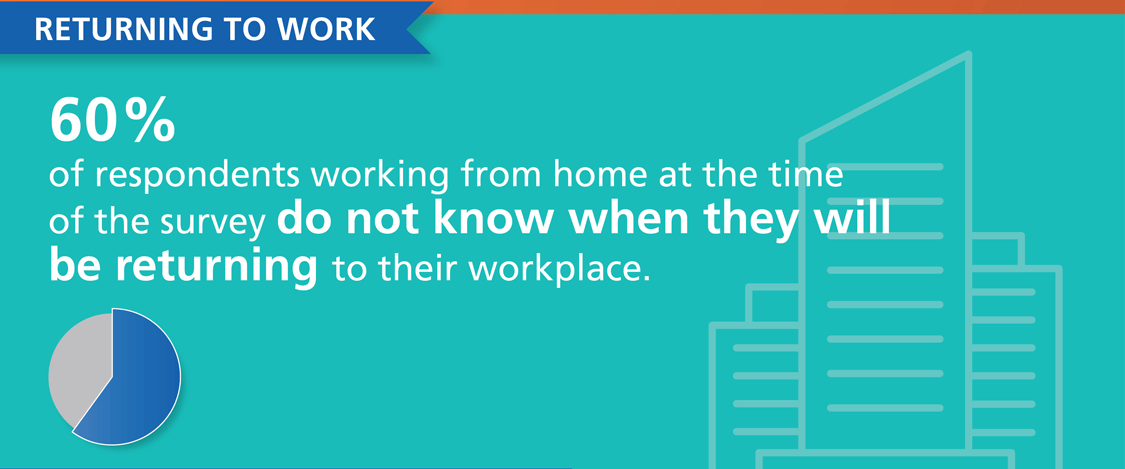
When asked about the top three safety measures that would improve how they feel about riding transit and carpooling, respondents prioritized wearing masks and efforts to encourage social distancing in the vehicle, including more frequent service and marked off seats. 37% of respondents who are currently commuting via bicycle switched from a different mode, indicating that commuters see bicycling as a good alternative to their usual commute during COVID-19. New bike lanes and shared use paths were the top safety measures respondents reported would improve how they felt about bicycling.
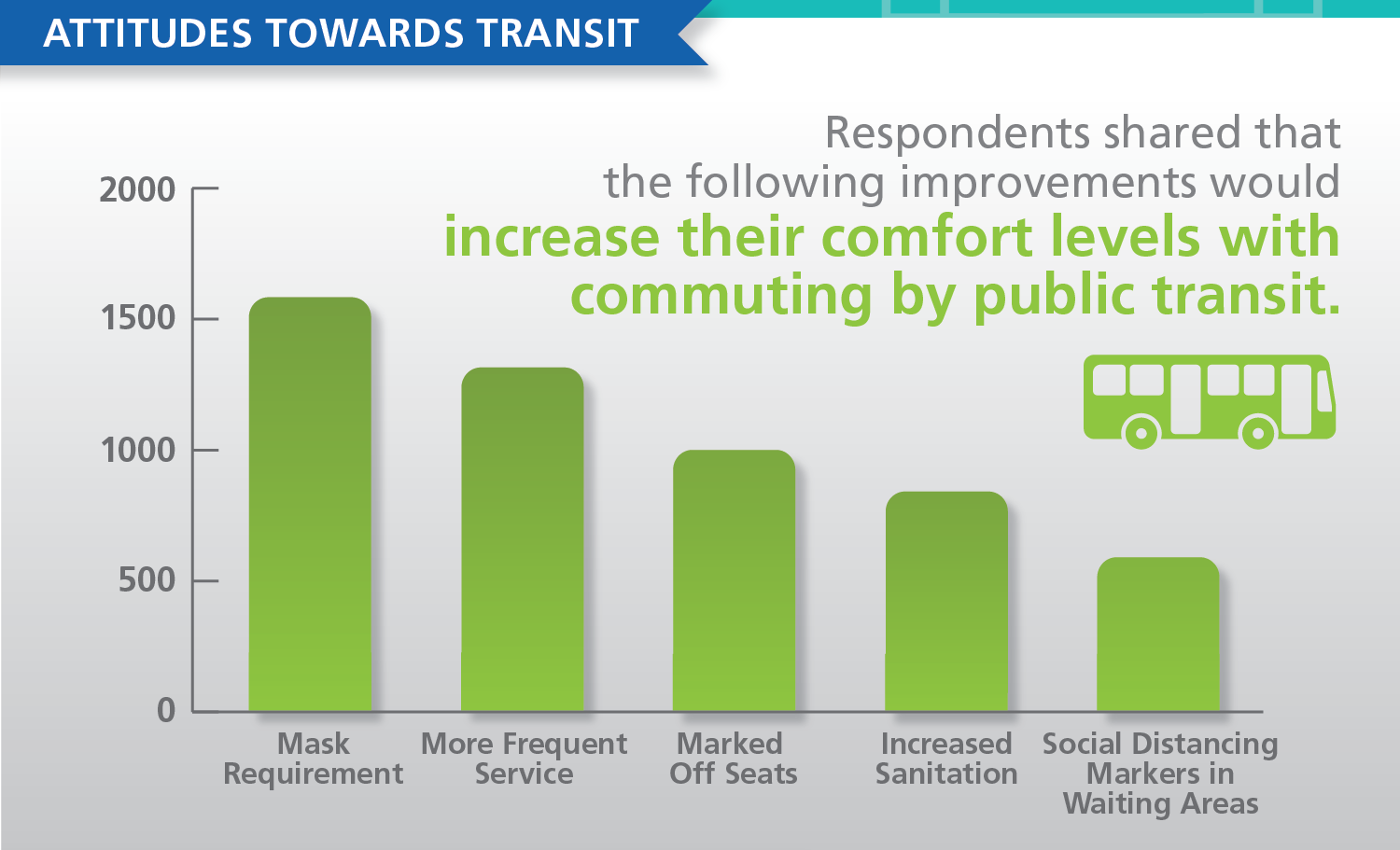

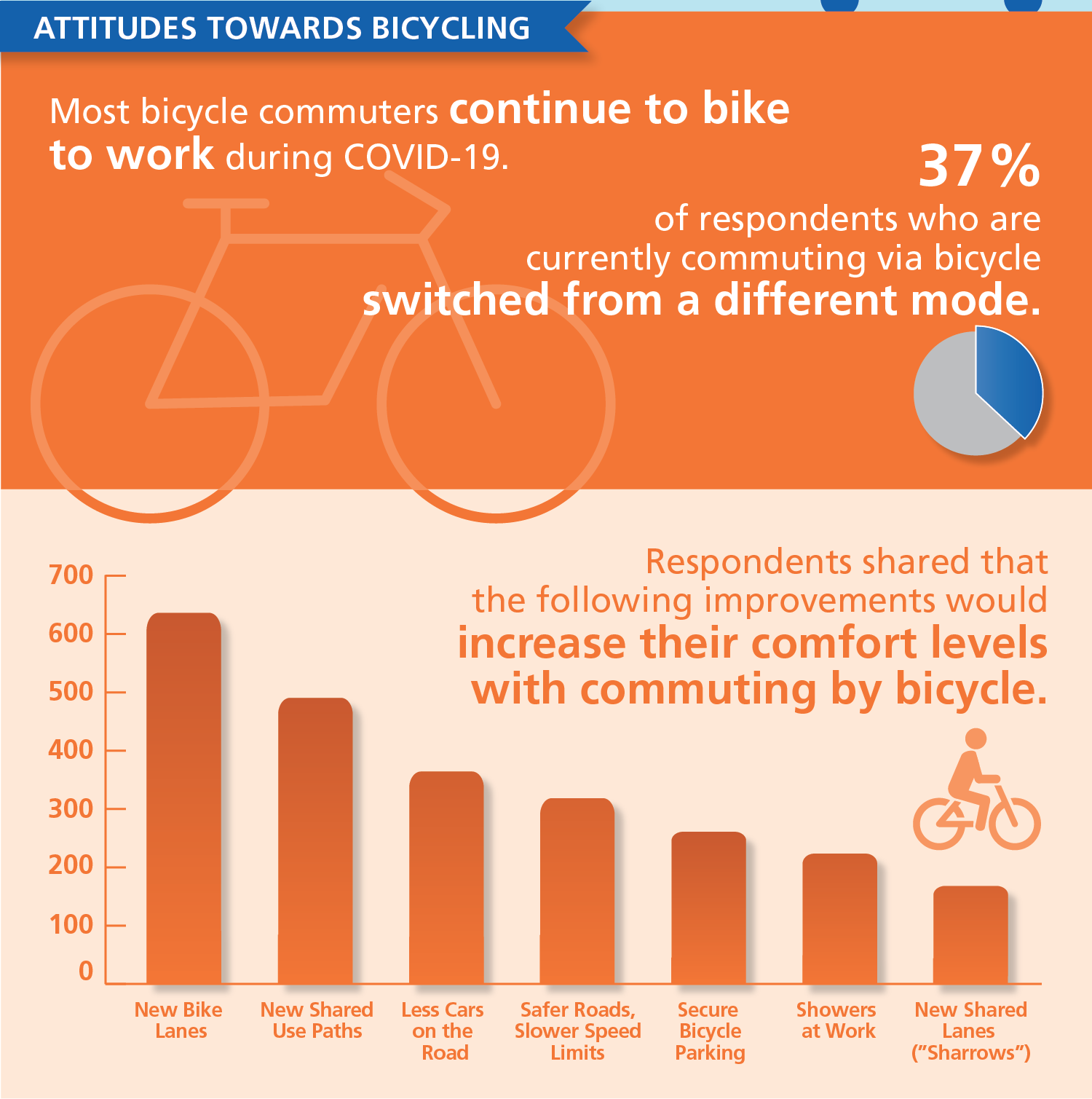
The COVID-19 pandemic has changed not only how Virginians commute, but also if they are commuting at all! Use of all commute modes besides driving a personal vehicle dropped more than 50% compared to pre-COVID commute habits. How are these commuters working instead? At the time they completed the survey, 53% of survey respondents report working from home at least part time. Many commuters working from home plan to take their usual modes when returning to their workplaces, but nearly half of those currently working from home hope to continue to do so at least part time in the future.

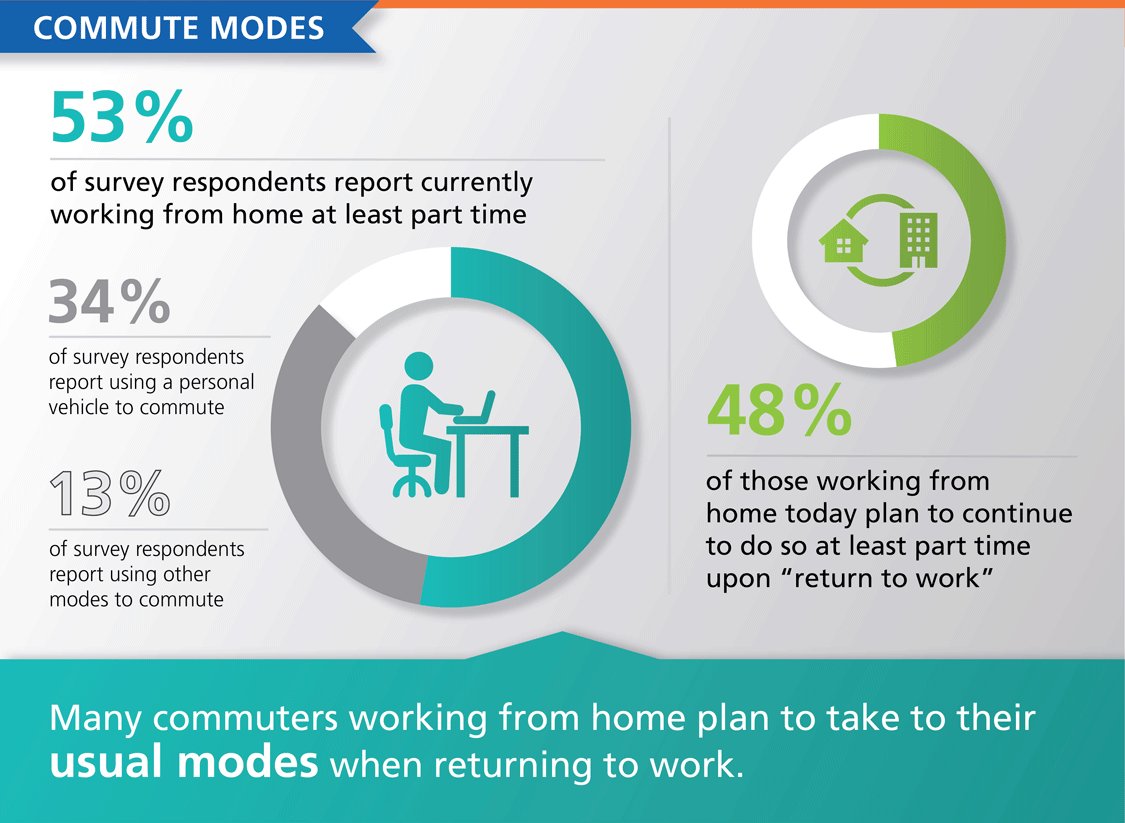
For inquiries related to this survey, please email planning@vdot.virginia.gov.




